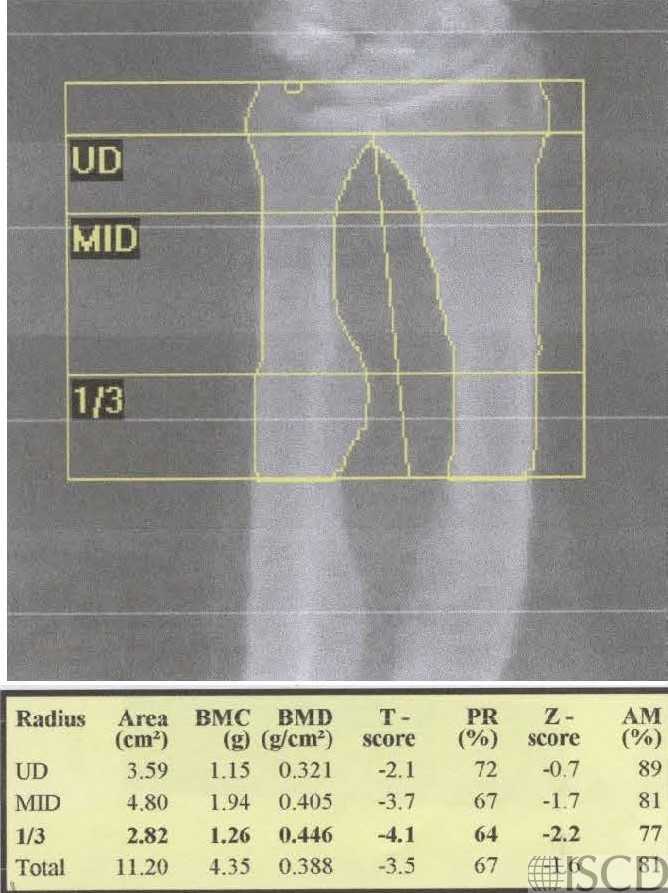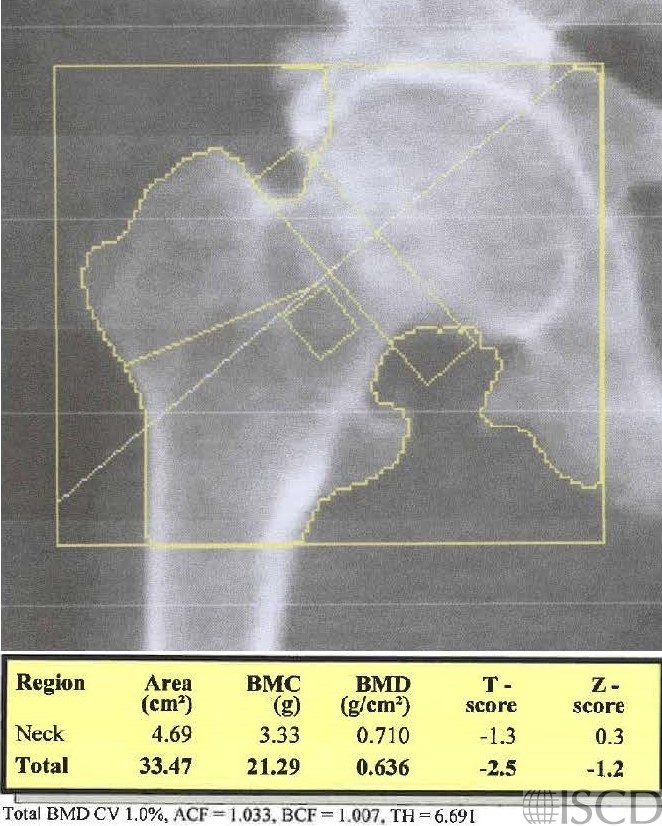Hypophosphatemic Rickets
Left Hologic wrist scan from a postmenopausal woman with hypophosphatemic rickets.

Right proximal femurs scan from a postmenopausal woman with hypophosphatemic rickets.

The lumbar spine radiograph show enthesopathic abnormalities characteristic of hypophosphatemic rickets. There is a laminectomy. There are diffuse DISH-like changes and bony remodeling with generalized osteopenia consistent with the hypophosphatemic rickets.

This is the Hologic wrist and hip DXA scan of a postmenopausal Caucasian female patient with hypophosphatemic rickets. She had a history of wrist, leg, and collarbone fractures. No lab values were available. Hypophosphatemic rickets is an inherited in an autosomal recessive pattern and patients may have muscle weakness, short stature, skeletal deformities, and bone pain. The serum calcium is often normal, and the serum phosphate is low, with increased urinary phosphorus levels, and the serum alkaline phosphatase is usually elevated.
The spine is not scanned because of laminectomy and spinal fusion. The patient was not able to internally rotate the hip, and the femoral neck region of interest includes a portion of the femoral head. Patients with hypophosphatemic rickets have low bone mineral density. The radiographic findings characteristic of hypophosphatemic rickets are like nutritional rickets and can include metaphyseal margins that are indistinct, widening of metaphyseal ends, cupping, and metaphysis concavity. Patients may have bowed legs and knock knees and thickened wrists and ankles. Enthesopathic abnormalities are frequently seen in the pelvis and spine.
Sarah L Morgan, MD, RD, CCD, The University of Alabama at Birmingham
• Zhang, C., et al., Proximal femoral changes related to bisphosphonate use and looser zones in hypophosphatemic osteomalacia: dual-energy X-ray absorptiometry findings. J Clin Densitom, 2013. 16(3): p. 380-3.
• Haffner, D., et al., Clinical practice recommendations for the diagnosis and management of X-linked hypophosphataemia. Nat Rev Nephrol, 2019. 15(7): p. 435-455
• Valsbich MH, Koch VH. Hypophosphatemic rickets: results of long-term follow-up. Pediatr Nephrol 2006 21: 230-234/
• https://radiopaedia.org/articles/hereditary-hypophosphatemic-rickets?lang=us#:~:text=Laboratory%20findings%20include%20low%20serum,D%20levels%20are%20often%20normal.
Day AL, Morgan SL, Saag KG. Hypophosphatemia in the setting of metabolic bone disease: case reports and diagnostic algorithm. Ther Adv Musculskel Dis 2018. 10 (7), p 151-156.